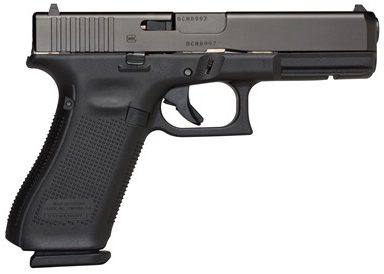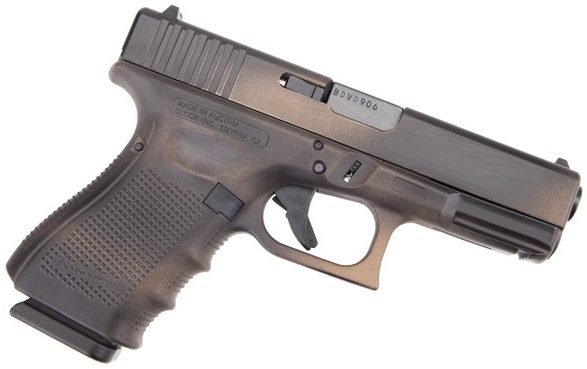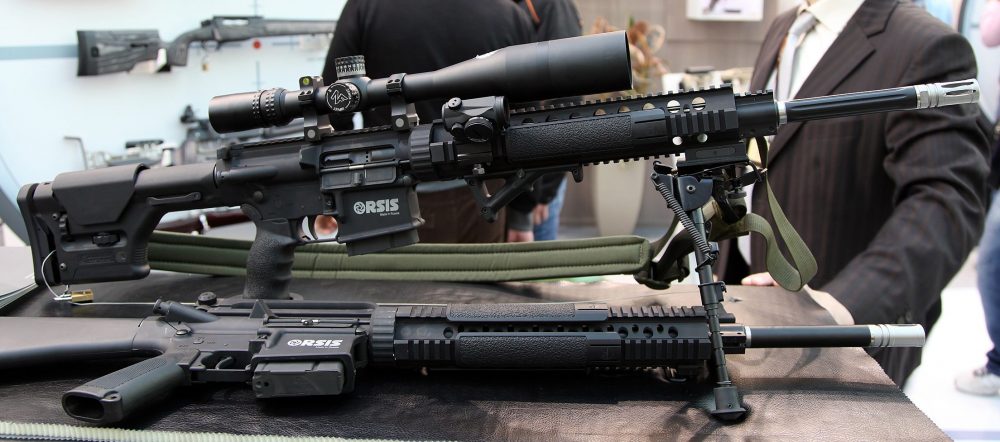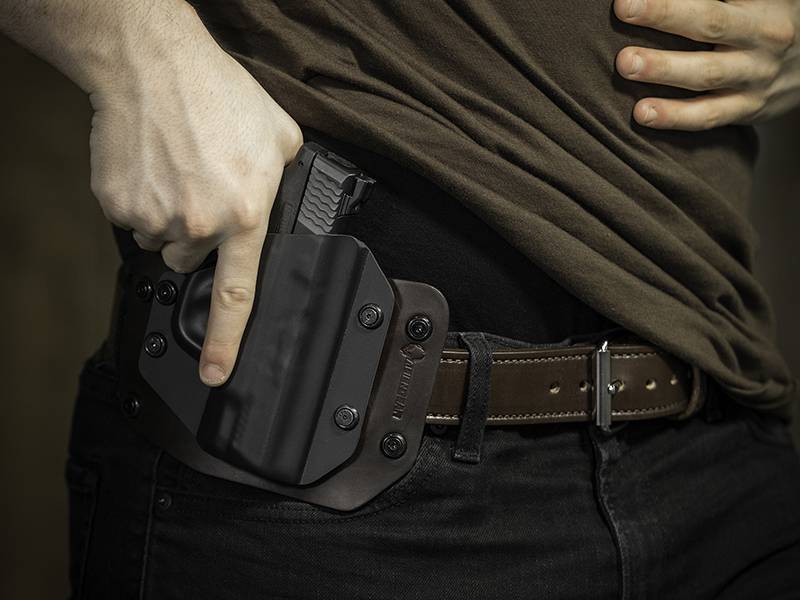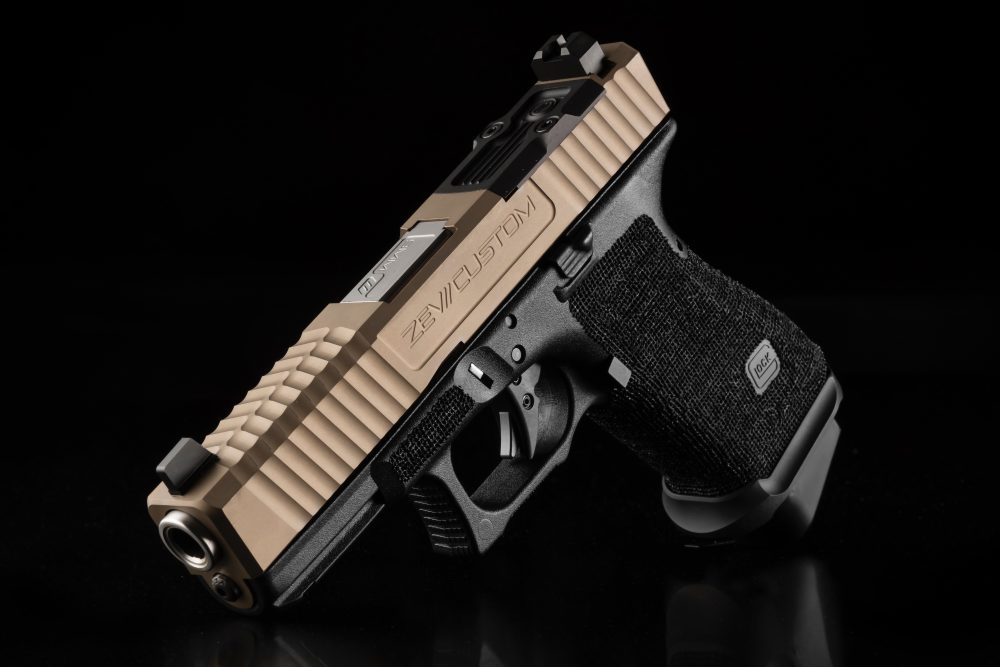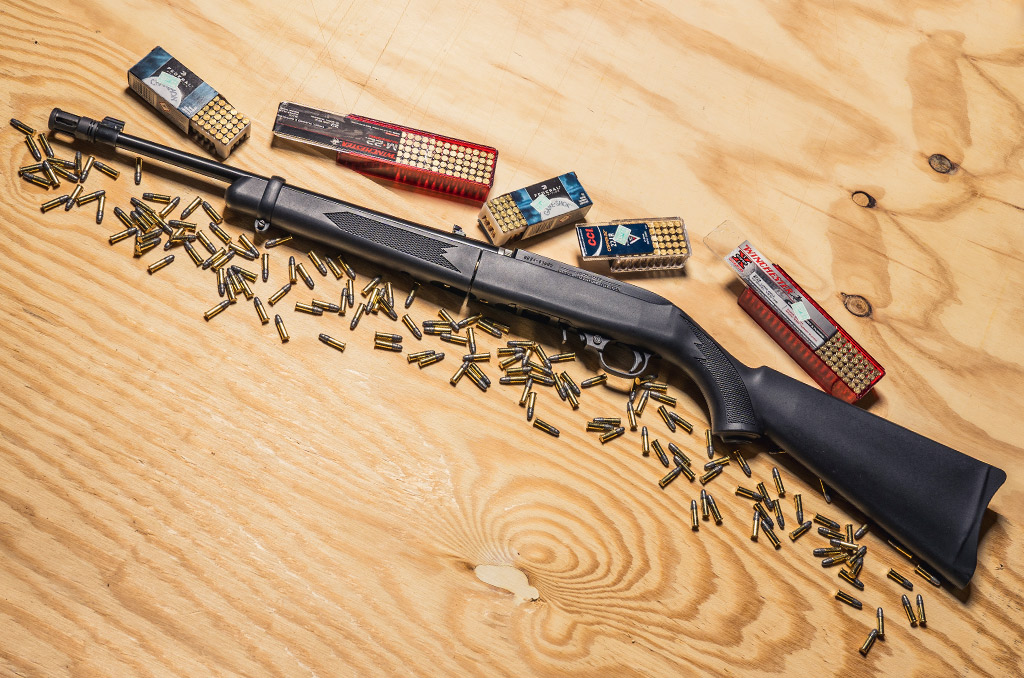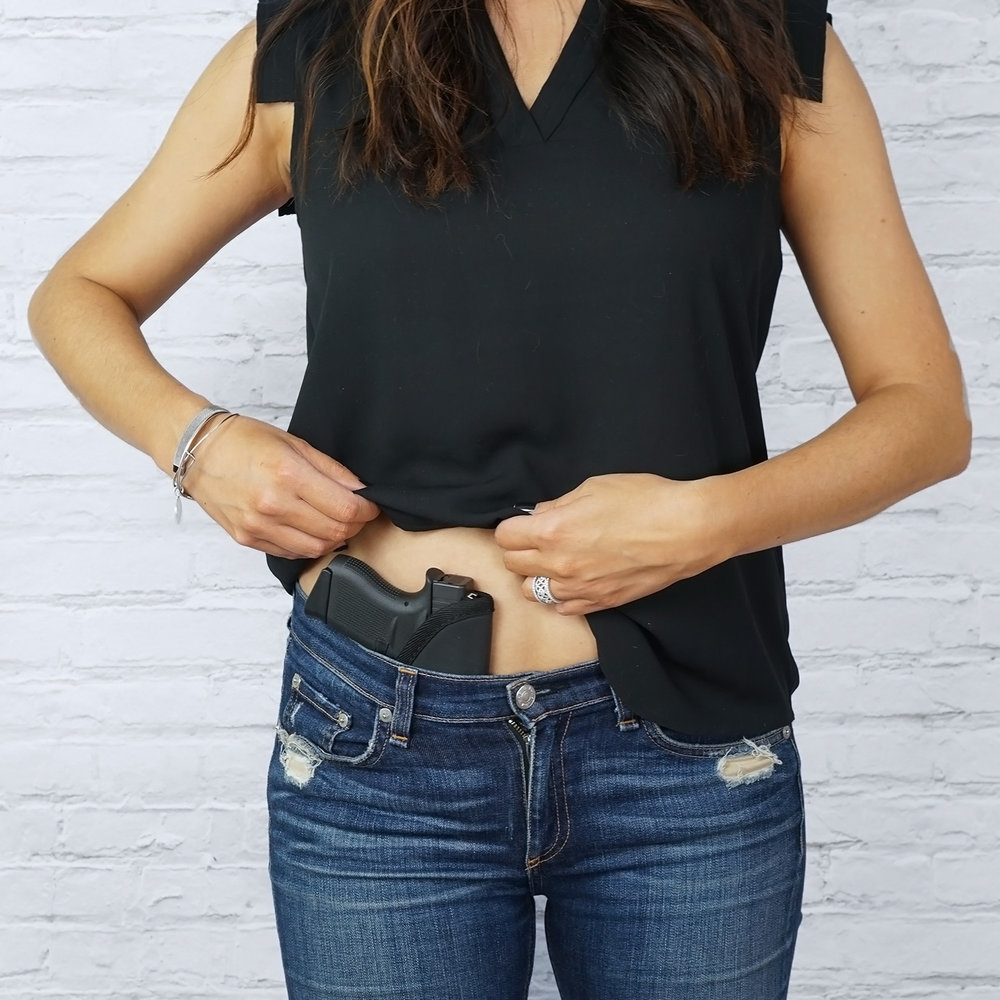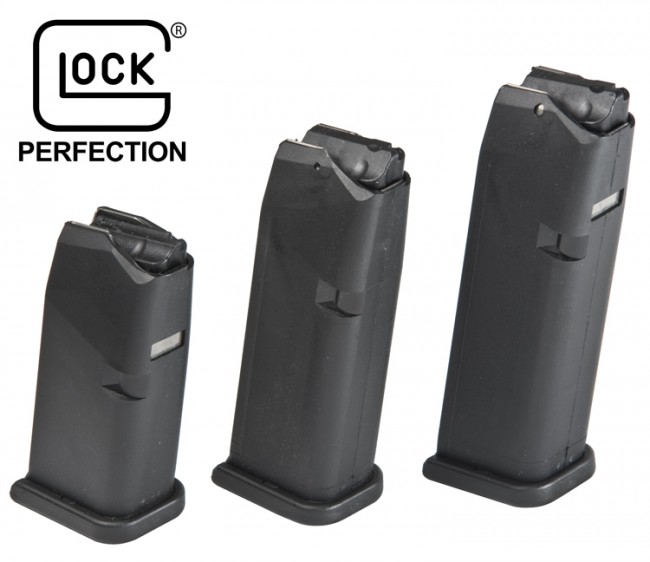Choosing your first handgun is a big decision, especially if you’re on a limited budget. While most online resources are going to offer advice on concealed carry weapons (CCW), handguns are also a great option for home defense.
The classic image of racking a pump-action shotgun and sending an intruder scampering for the hills may be an abiding part of gun culture, but it’s flawed for a number of reasons.
For one, if you’re in a life-or-death situation, please make sure you have a round chambered already. Yes, you should be shouting that you’re armed and calling the police, but a determined attacker isn’t going to care what you’re saying, or what intimidating noises you’re making.
Second, maneuvering a full-size shotgun or rifle inside the confines of a home is a difficult prospect even for trained professionals. Granted, you have the advantage of working in an area you should know well, but there’s just no getting around the limitations of a full-size firearm in a confined space.
This is where a defensive handgun sometimes makes an even better option in a home defense scenario.
That still leaves you with the problem of choosing from the hundreds of options out there. That’s what we’re going to cover today.
This guide should give you everything you need to know about choosing a home defense handgun. Most of this is going to be geared towards a new handgun owner, but there will be plenty of information to help even experienced shooters choose their home defense option.
Let’s begin.
Choosing the Right Caliber
The two biggest contenders for an HD pistol are going to always be 9mm and .45 ACP.
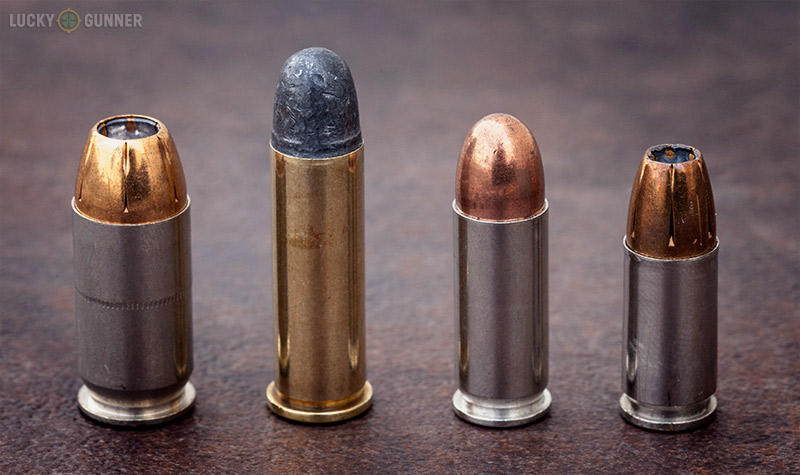
Of these two, we recommend a 9mm-chambered option for your first home defense gun, as it will be more versatile, and easier to use.
9mm is the most popular handgun round on the planet, and for good reason. It’s cheap, plentiful, and modern loadings are as powerful as the much bigger .45 ACP rounds from decades past.
Most 9mm handguns are also going to be double-stack weapons, meaning the rounds are staggered in the magazine to give you capacities in the 15+ range, rather than the typical seven or ten-round, single-stack magazines found in most .45 ACP firearms.
9mm also has significantly less recoil than a .45 ACP and is going to be cheaper overall to shoot. While you shouldn’t ever skimp on your home defense ammo (which we’ll get to in just a minute) you should train extensively with your gun, which means spending a good many hours at the range, and a good many dollars on ammo. Cheaper ammo (on average) makes that dollar go further and allows you to get more practice in with the gun you may one day be defending hearth and home with.
Choosing the Right Ammo
Any defensive ammo should be a hollow point round for maximum soft-tissue damage and minimum over-penetration. This increases the likelihood of stopping a threat with a hit to a vital area and decreases the chances of the bullet traveling through your target and striking something or someone behind it.
This is especially important if you live in an apartment or in a home with thin walls.
You’ll also want to go with a 124 gr or 147 gr projectile that has more mass than say, the 115 gr FMJ loads you’ll likely be practicing with. 124 gr vs 147 gr is mostly a preference where you have a slightly smaller bullet moving slightly faster, or a slightly larger bullet moving slightly slower.

Generally speaking, within the same caliber, slow and heavy penetrates deeper than fast and light.
You can also get some 135 gr loads that more or less split the difference.
Finally, make sure you’re buying ammo from a reputable manufacturer with a history of quality. Some examples of manufacturers and brands you should look at first include:
A small note on the Hornady since I know people will ask, Critical Defense and Critical Duty are two separate lines of defensive ammo from Hornady. Critical Defense is designed for the civilian user and offers penetration consistent with civilian needs at around 13″.
Critical Duty is designed for Law Enforcement and offers more penetration at around 19″, this is due to LEO generally being more likely to need to shoot through a barrier.
What you need is up to you, personally – Hornady Critical Defense is what I keep loaded in my nightstand guns.
Choosing the Right Size Home Defense Firearm
To make this simple, choose a full-size firearm. If you’re stashing this weapon in a nightstand or even better, in a quick-access bedside safe, there’s no reason to go with a compact or subcompact gun that is harder to shoot and holds fewer rounds in the magazine.
Get something that allows you to put all three fingers on the grip, and holds at least 10 rounds in the magazine (or preferably more if your state laws allow).
If your home defense gun is going to do double duty as a CCW weapon, I’d err on the side of something a little larger, such as the compact Glock 19. Something in this size range is perfectly concealable for most people but is also easy to shoot under pressure.
Contrary to popular belief, small pocket-sized guns don’t make for a good first firearm because they are intrinsically more difficult to aim and shoot accurately and have fewer rounds on tap.
Home Defense Handgun Sights
Most home-defense situations are going to happen at night, so it makes sense to have sights that work well in low-light conditions, no? For this reason, we recommend looking for a gun that either has night sights already installed or can easily accept them.
The top two brands of night sights are Meprolight and Ameriglow, but many manufacturers also have an OEM line of night sights so if you’re ordering a new gun, try to get one with new sights already installed.
Best Home Defense Handguns for Beginners
This should give you all the info you need to choose a handgun for home defense, but we want to leave you with a few good options to get you started.
These are all battle-tested and proven weapons that won’t let you down when it really matters.
Glock 17 and Glock 19
Austrian manufacturer Glock frequently tops lists of best handguns for carry, home defense, and competition.
The G17 and G19 are their full-size and compact 9mm offerings respectively, and both have seen service in various militaries and with thousands of law enforcement agencies around the world. Either will serve you just fine for home defense.
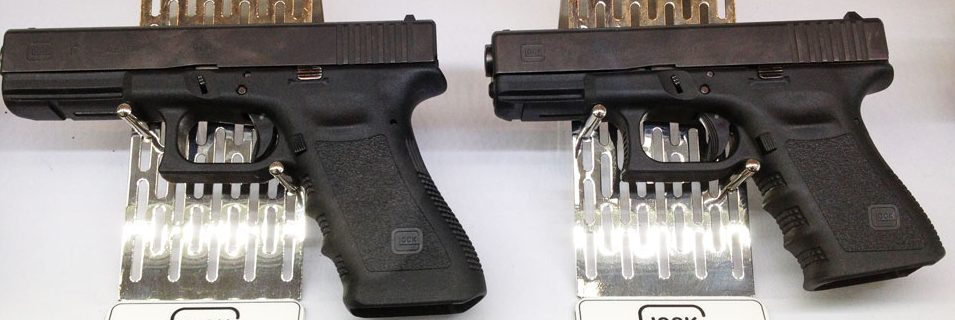
The primary difference is the size, with the G19 being a tad smaller up and down and muzzle to rear than the 17, at the cost of two rounds of capacity.
SIG SAUER P320
The SIG P320 was recently confirmed as one of the newest side arms to be issued to US troops and is already seeing widespread adoption by many law-enforcement agencies.
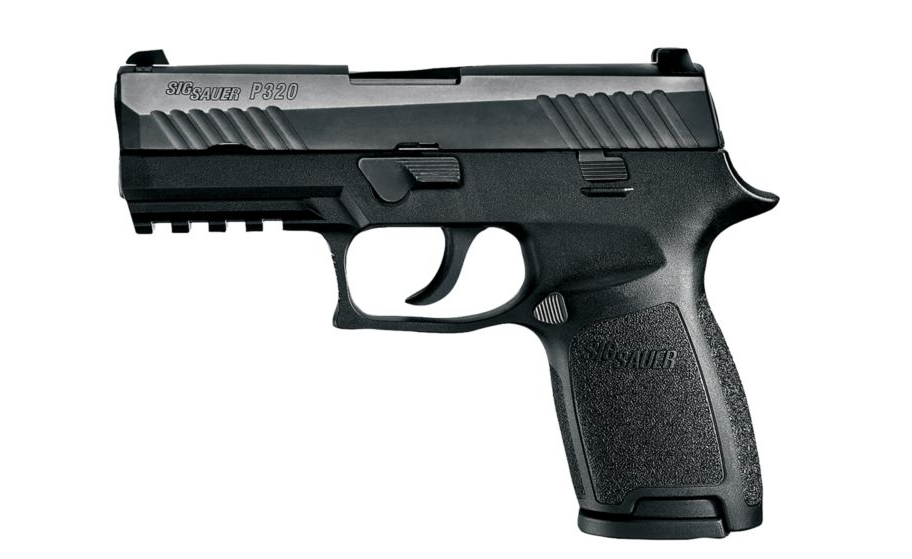
Sig Sauer P320
Pros
- Interchangeable grip modules
- Caliber X-Change kits
Its modular design makes it possible to change out the frame to give you sub-compact, compact, and full-size options and multiple caliber choices as well.
For this, we recommend the full-size or compact 9mm versions.
Smith and Wesson M&P9 2.0
The Smith and Wesson M&P line is a force to be reckoned with, both as a duty gun issued to law enforcement and on the field of competition.
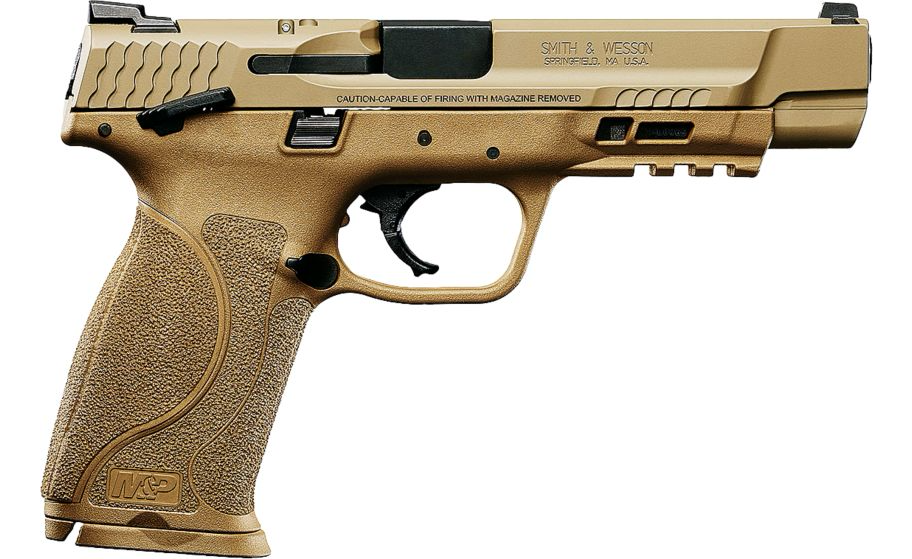
S&W M&P 9mm M2.0
Pros
- Available with and without manual thumb safety
- adjustable backstrap
The M&P9 2.0, in particular, comes with an upgraded trigger and can often be found with night sights already installed.
Conclusion
You should now have all the info you need to choose your first (or fiftieth) home defense handgun. If you’re looking to get a gun that will help you defend yourself and those you hold most dear, this is where you should start.
Although, it is worth noting that in a dire situation, any gun is better than no gun. Of course, it’s always better to have the best possible option available, and you should now have the ability to pick up the best gun you can.
What did you pick for your first Home Defense weapon? Let us know in the comments!


